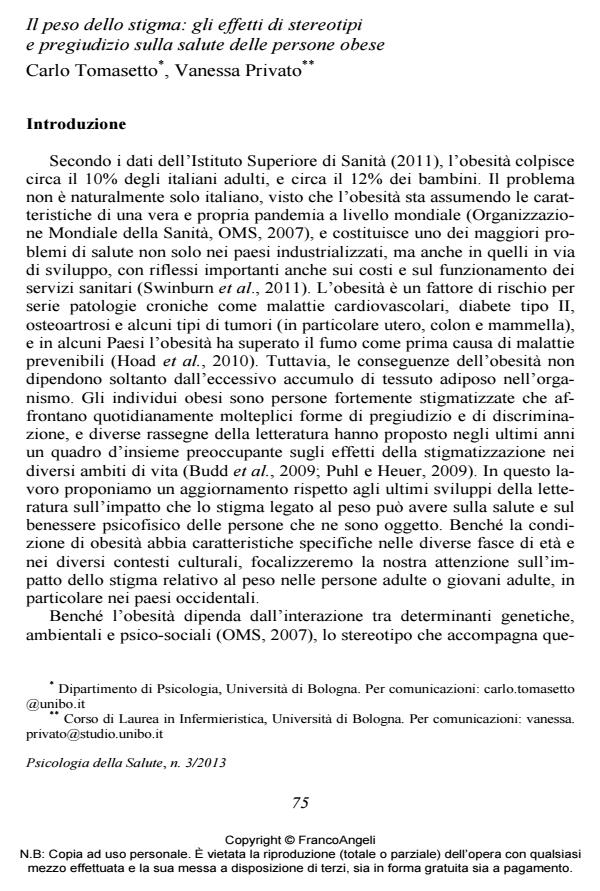The weight of stigma: The impact of stereotypes and prejudice on obese individuals’ health
Journal title PSICOLOGIA DELLA SALUTE
Author/s Carlo Tomasetto, Vanessa Privato
Publishing Year 2013 Issue 2013/3
Language Italian Pages 25 P. 75-99 File size 413 KB
DOI 10.3280/PDS2013-003004
DOI is like a bar code for intellectual property: to have more infomation
click here
Below, you can see the article first page
If you want to buy this article in PDF format, you can do it, following the instructions to buy download credits

FrancoAngeli is member of Publishers International Linking Association, Inc (PILA), a not-for-profit association which run the CrossRef service enabling links to and from online scholarly content.
Obese individuals are a highly stigmatized group that makes the object of pervasive negative stereotypes, prejudice, and discrimination. Empirical studies documenting the impact of weight stigma on obese individuals’ health and psycho-physical well-being are examined in the present literature review. Correlational and experimental studies suggest that subjective experiences of stigma and discrimination reduce psychological well-being and, controlling for actual weight status, increase the risk of obesityrelated pathologies, thwart the adoption of correct alimentary habits, and limit the maintenance of adequate levels of exercise. Studies suggesting possible effects of the stigma through negative attitudes and (perceived) discriminatory behaviors enacted by health care professionals, are also reviewed. Implication include the need to support obese individuals to cope with weight stigma, and to design appropriate intervention to reduce weight-based discrimination at the societal level. (Word count: 131)
Keywords: Obesity, Stigma, Stereotypes, Discrimination, Health.
Carlo Tomasetto, Vanessa Privato, Il peso dello stigma: gli effetti di stereotipi e pregiudizio sulla salute delle persone obese in "PSICOLOGIA DELLA SALUTE" 3/2013, pp 75-99, DOI: 10.3280/PDS2013-003004